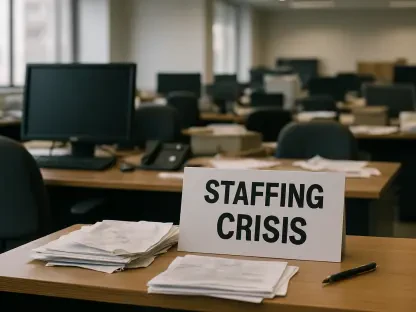I’m thrilled to sit down with Sofia Khaira, a renowned specialist in diversity, equity, and inclusion, who has dedicated her career to transforming workplace cultures and enhancing talent management. With her deep expertise in fostering inclusive environments, Sofia offers invaluable insights into how employees can find meaning in their work and how organizations can combat the rising tide of burnout. In our conversation, we explore the psychological buffers that meaningful work provides, the unique challenges faced by public service workers, the critical role of leadership in affirming value, and the staggering financial toll burnout takes on businesses.
Can you share some insights from recent research about how finding meaning in work can influence employee well-being?
Absolutely. Recent studies, like one from the University of Georgia, have shown that when employees feel their work has purpose—especially when it benefits others—they’re less likely to experience burnout. The research focused on how a sense of meaning acts as a psychological buffer against stress. It’s not just about doing a job; it’s about believing that what you do matters, whether it’s improving a community or supporting a colleague. This connection to a larger impact can make tough days more bearable.
What can you tell us about the specific group of workers studied in this research and the unique stressors they faced?
The study zeroed in on over 650 police officers surveyed between 2019 and 2021. This group was chosen because they’re front-line public service workers who often deal with intense emotional and physical demands. During this period, they faced compounded stressors like the pandemic and widespread protests for racial justice reform. Many reported emotional exhaustion, yet a significant number still felt their work made their communities safer, which helped them push through despite low pay and long hours.
How does a sense of purpose affect retention among workers in high-stress roles like public service, compared to other industries?
Purpose is a powerful motivator, especially in high-stress roles like policing. For these workers, the belief that they’re serving a greater good—protecting their community or making sacrifices for others—often outweighs the downsides like poor compensation or grueling schedules. In contrast, employees in other industries, where the direct impact on others might not be as clear, often struggle more with retention if they can’t connect their daily tasks to a broader mission. Without that sense of purpose, dissatisfaction and turnover can spike much faster.
What are some practical ways leaders can help employees reconnect with the meaning behind their work?
Leaders play a crucial role here. One effective approach is providing regular, genuine feedback that highlights the real impact of an employee’s contributions—showing them how their work has made a difference. Additionally, during stressful times, offering tangible support resources, like access to counseling or stress management programs, can be vital. Simple gestures, like publicly acknowledging achievements or tying individual tasks to the organization’s mission, can also remind employees of their value, especially in high-pressure environments.
With burnout rates reportedly at their highest in nearly a decade, what do you think is driving this alarming trend?
There are several factors at play. Many employees cite overwhelming workloads, lack of work-life balance, and insufficient support from leadership as key reasons for feeling burned out. The past few years have been particularly tough, with external pressures like the pandemic adding to workplace stress. There’s also a growing disconnect for some workers who don’t see how their efforts contribute to something meaningful, which amplifies exhaustion. This dissatisfaction often translates into lower ratings for employers, as employees feel undervalued or unsupported.
Can you elaborate on the financial consequences of burnout for organizations, and why it should be a priority for business leaders?
Certainly. Research indicates that burnout can cost companies up to $21,000 per employee each year due to factors like reduced productivity, absenteeism, and turnover. For a mid-sized company with 1,000 employees, this can add up to over $5 million annually—a staggering figure. This financial hit, combined with the loss of talent and morale, makes addressing burnout not just a moral imperative but a business one. Leaders who ignore this risk long-term damage to both their bottom line and their workforce.
What is your forecast for the future of workplace well-being and burnout prevention in the coming years?
I believe we’re at a turning point. As awareness of burnout grows, more organizations will prioritize mental health and well-being initiatives, though progress might be uneven. We’ll likely see an increase in tailored support, like mental health training for managers and flexible work policies, but only if companies commit to real investment. My hope is that fostering meaningful work becomes a core strategy, not just a buzzword, because that’s where lasting change will come from. However, if economic pressures or short-term thinking dominate, we could see burnout persist as a major challenge.









